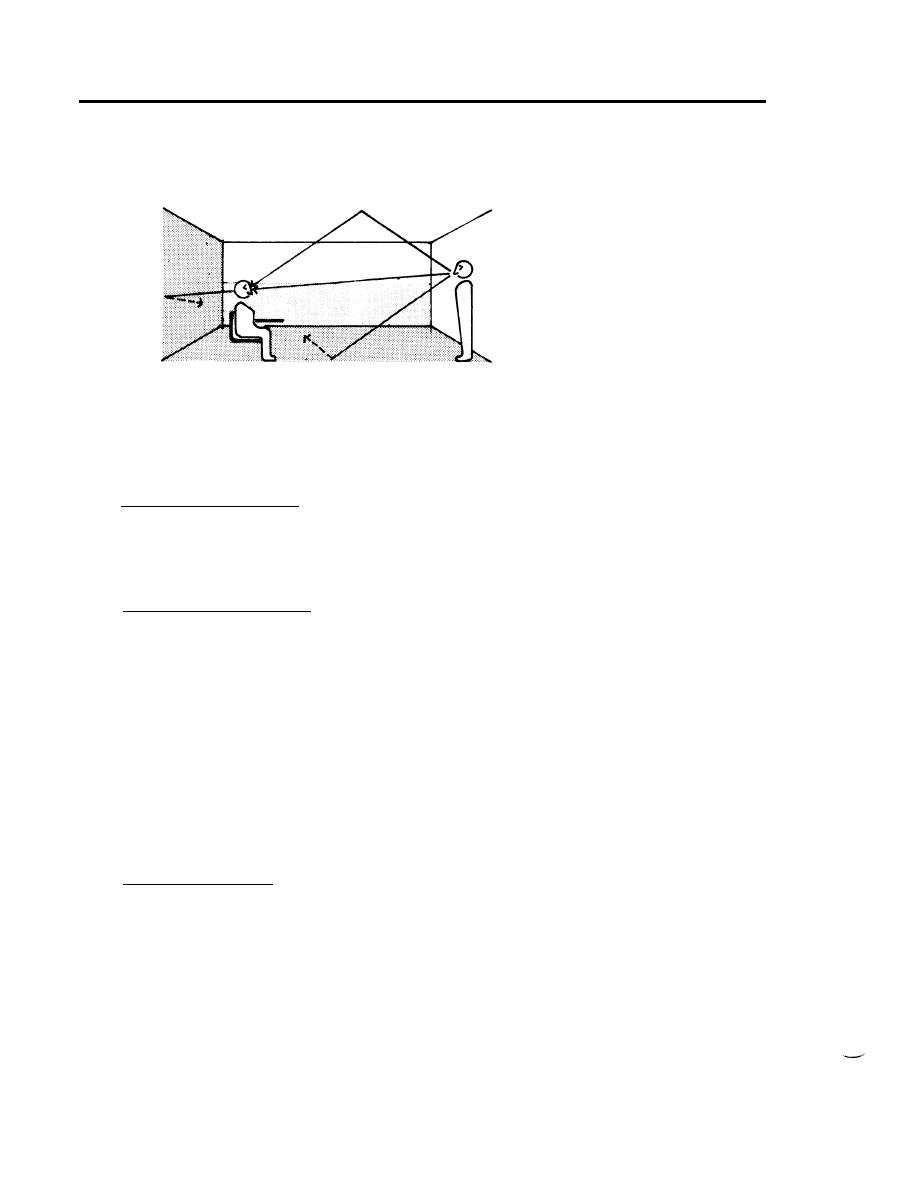
GENERAL DESIGN CONSIDERATIONS
DG 1110-3-112 May 1979
3-4 BUILDING DESIGN (cont'd)
Sound reflective surfaces
indicated in white
Sound absorptive surfaces
indicated in tone
Figure 3-7 Sound Control In Classrooms
(i) Structural Considerations. Sounds should be isolated and/or reduced at their source, if
possible. Machines producing high intensity sound can be enclosed with sound absorbing walls or
shielded with sound absorbing material. Machines that produce high-intensity structure-borne sound
should be acoustically isolated by special mounts.
(j) Mechanical Considerations. Air conditioning ducts may have to be treated to reduce noise
transmission through the ducts. Space above ceilings, provided for distribution of ducts and other
mechanical or electrical items, can allow excessive noise transmission from one space to another.
Where such cases may occur, walls or partitions should extend up to the underside of the roof or floor
above.
d. INTERIOR DETAILING. The attractiveness and overall usefulness of the building is directly
affected by the interior detailing of the building design. Interior detailing will be developed in
conjunction with an overall interior design so that items which are part of the building contract are
coordinated with related furnishings and equipment to be procured separately by the installation.
Interior wall systems, finish materials, signage and color applications must be carefully considered in
this regard.
(1) Interior Wall Systems. Permanent walls should be held to a minimum necessary for structural
and fire resistance purposes. Transverse walls where practical should be semi-permanent or movable.
Employ movable walls in those spaces in which changes in function or class size are relatively
frequent. Figure 3-8 shows some of the basic characteristics of the most common types of movable
and semi-permanent interior wall systems. Table 3-2 provides data on the comparative cost and
flexibility of wall systems. The designer must develop an accurate estimate of the frequency of
functional change in a given space, and on that basis, select an appropriate interior wall system.
3-18



 Previous Page
Previous Page
